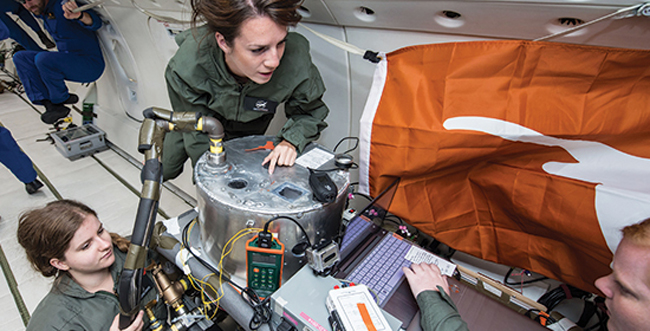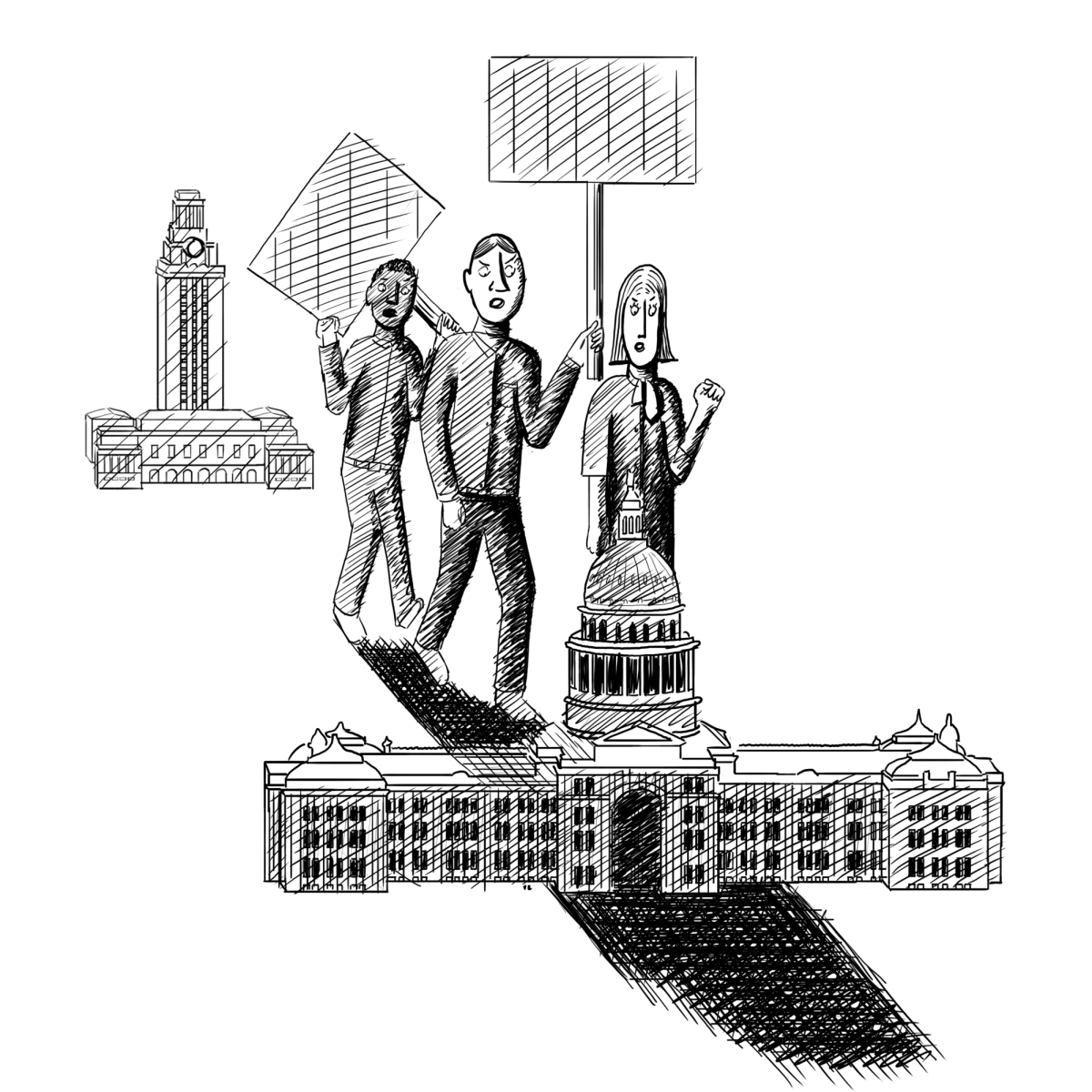Students in a women’s engineering group at UT became the first people to test how a new material burns in microgravity in early June.
The six students, members of the Cockrell School of Engineering’s Women in Aerospace for Leadership and Development, flew in a reduced gravity NASA aircraft as part of NASA’s Reduced Gravity Flight Education Program. The group, which NASA accepted into the program in December because of its proposal “Properties of Vectran Combustion in Microgravity,” was one of 18 teams to fly in the aircraft.
The group participated to understand how Vectran, a material that is stronger than steel and highly heat-resistant, burns in microgravity.
“We want[ed] to see if this material is durable and [can] be used on a spacecraft that takes humans to Mars,” aerospace engineering senior Patil Tabanian, who will be the group’s president beginning in August, said in an email. “After flying our experiment in NASA’s microgravity aircraft, we reviewed our results and concluded that Vectran burns similarly in microgravity as it does on Earth’s environment.”
Throughout the year, members proposed, designed and built a structure that contained a piece of Vectran. During the process, the group partnered with various companies and other organizations.
Although the student engineers experienced problems during the flight week in Houston, members said overcoming them has been an insightful part of their time with NASA.
“A lot happened in Houston which most other teams didn't experience, mainly failure,” Nicole Pinto, recent aerospace engineering graduate and the group’s president, said in an email. “We had a serious leak problem with our structure and were told that it wouldn't fly unless it was completely sealed.”
Pinto said the team worked every night to fix the problem and often felt discouraged at the results before the flight.
“There were times when all of us wanted to just give up. After all the hours we had put in, it was heartbreaking that it might not fly,” Pinto said. “But we truly lived the phrase ‘failure is not an option.’”
The team was able to fly for 20 seconds on the last day after fixing the problem, according to Tabanian. The group said they believe this accomplishment is important because it demonstrates the potential and abilities of female engineers, a minority in the engineering field. The 20 members of the group said they hope this project, and future projects, will continue to encourage females to enter and stay in the engineering field.
“This was truly a complete engineering experience – we had to do everything from the budget to a hazard analysis and building the actual project,” aerospace engineering junior Ashleigh Casion said in an email. “We learned a lot about problem solving and working together, and it will be an experience we will all remember for the rest of our lives.”
Members are currently preparing a report for NASA to help reduce fire risk for aircraft going to Mars, and are seeking to analyze the toxic byproducts Vectran produces in microgravity.




















